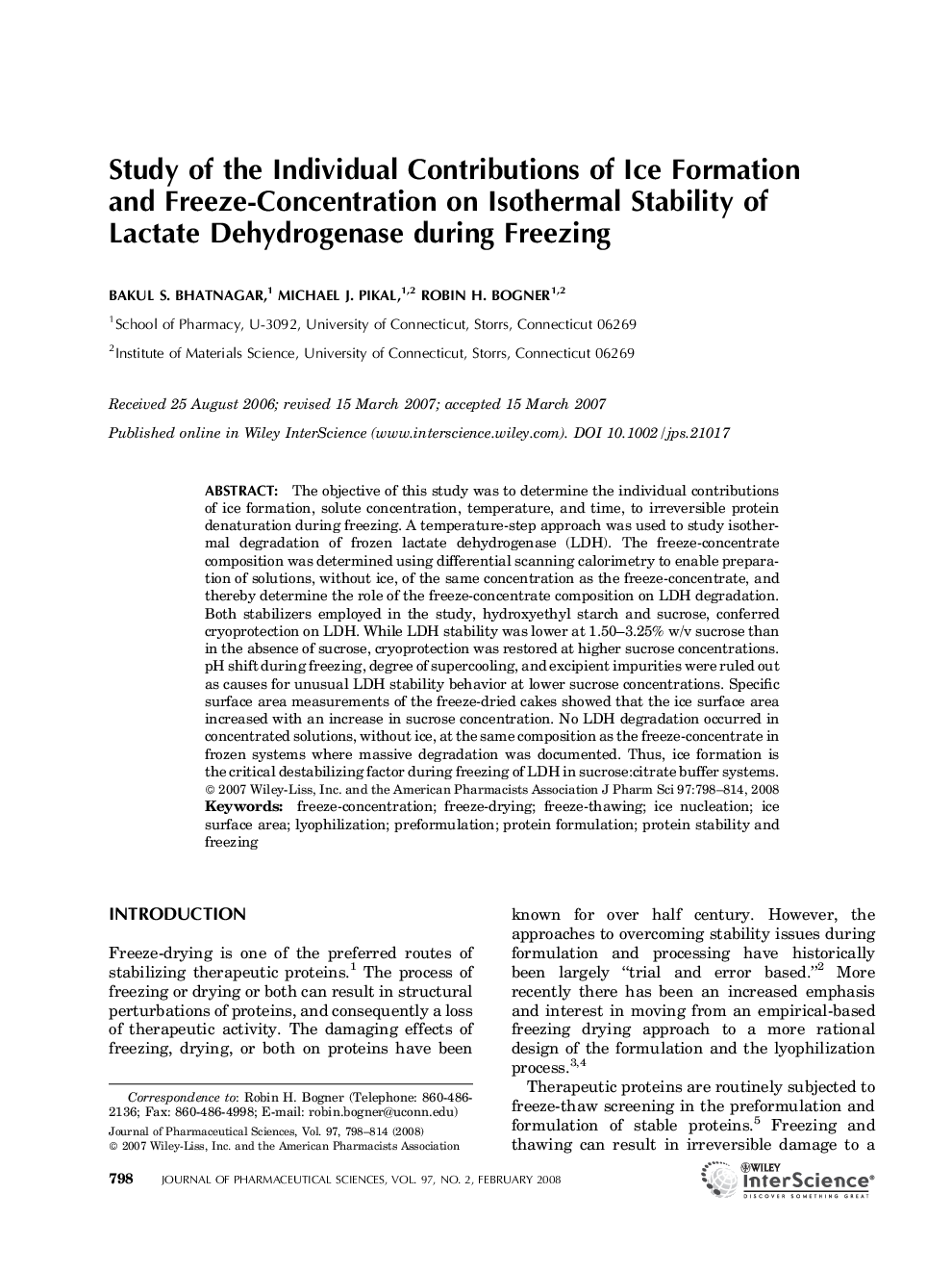| Article ID | Journal | Published Year | Pages | File Type |
|---|---|---|---|---|
| 2487442 | Journal of Pharmaceutical Sciences | 2008 | 17 Pages |
Abstract
The objective of this study was to determine the individual contributions of ice formation, solute concentration, temperature, and time, to irreversible protein denaturation during freezing. A temperature-step approach was used to study isothermal degradation of frozen lactate dehydrogenase (LDH). The freeze-concentrate composition was determined using differential scanning calorimetry to enable preparation of solutions, without ice, of the same concentration as the freeze-concentrate, and thereby determine the role of the freeze-concentrate composition on LDH degradation. Both stabilizers employed in the study, hydroxyethyl starch and sucrose, conferred cryoprotection on LDH. While LDH stability was lower at 1.50-3.25% w/v sucrose than in the absence of sucrose, cryoprotection was restored at higher sucrose concentrations. pH shift during freezing, degree of supercooling, and excipient impurities were ruled out as causes for unusual LDH stability behavior at lower sucrose concentrations. Specific surface area measurements of the freeze-dried cakes showed that the ice surface area increased with an increase in sucrose concentration. No LDH degradation occurred in concentrated solutions, without ice, at the same composition as the freeze-concentrate in frozen systems where massive degradation was documented. Thus, ice formation is the critical destabilizing factor during freezing of LDH in sucrose:citrate buffer systems. © 2007 Wiley-Liss, Inc. and the American Pharmacists Association J Pharm Sci 97:798-814, 2008
Keywords
Related Topics
Health Sciences
Pharmacology, Toxicology and Pharmaceutical Science
Drug Discovery
Authors
Bakul S. Bhatnagar, Michael J. Pikal, Robin H. Bogner,
